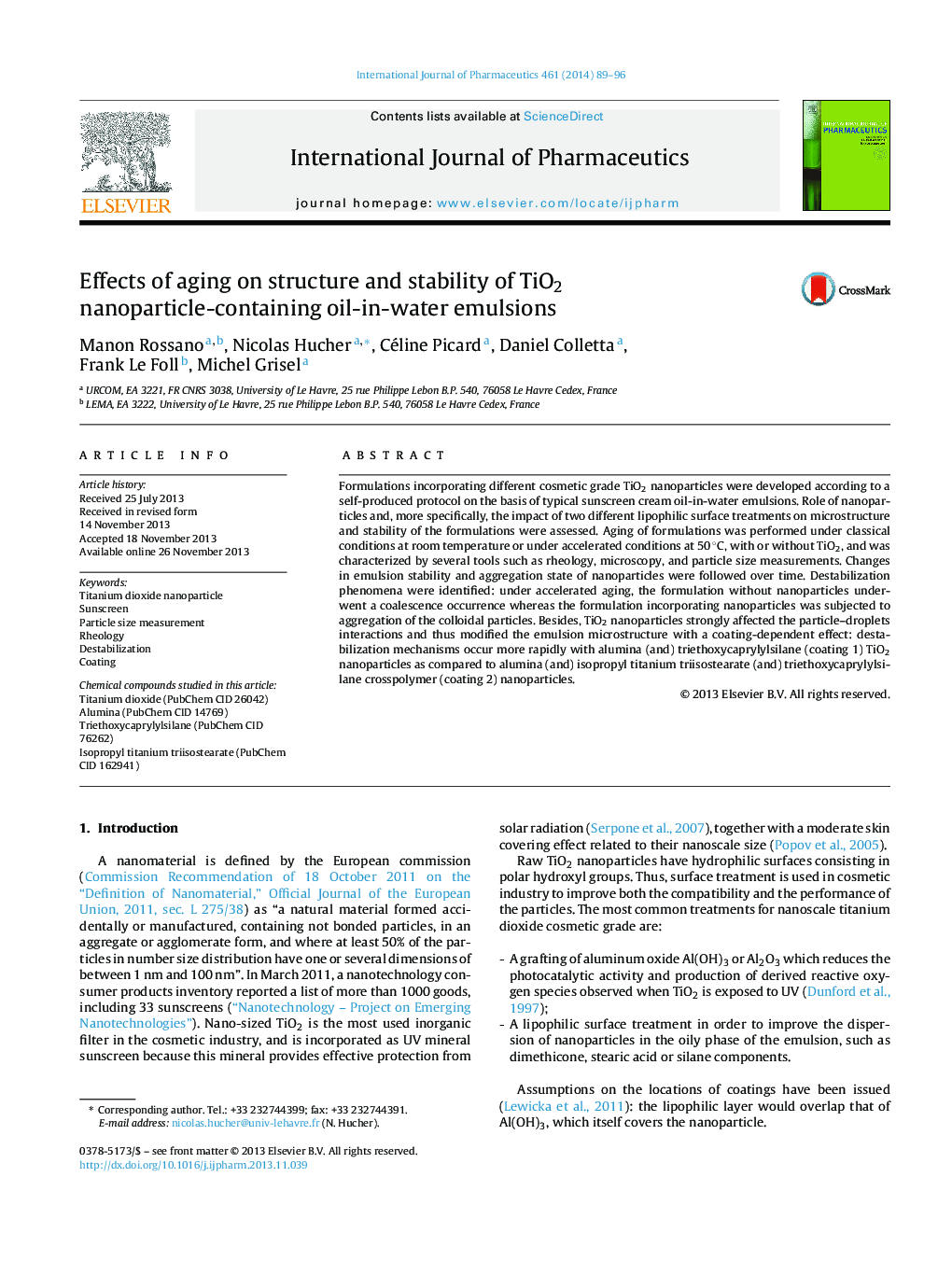| Article ID | Journal | Published Year | Pages | File Type |
|---|---|---|---|---|
| 2501920 | International Journal of Pharmaceutics | 2014 | 8 Pages |
Formulations incorporating different cosmetic grade TiO2 nanoparticles were developed according to a self-produced protocol on the basis of typical sunscreen cream oil-in-water emulsions. Role of nanoparticles and, more specifically, the impact of two different lipophilic surface treatments on microstructure and stability of the formulations were assessed. Aging of formulations was performed under classical conditions at room temperature or under accelerated conditions at 50 °C, with or without TiO2, and was characterized by several tools such as rheology, microscopy, and particle size measurements. Changes in emulsion stability and aggregation state of nanoparticles were followed over time. Destabilization phenomena were identified: under accelerated aging, the formulation without nanoparticles underwent a coalescence occurrence whereas the formulation incorporating nanoparticles was subjected to aggregation of the colloidal particles. Besides, TiO2 nanoparticles strongly affected the particle–droplets interactions and thus modified the emulsion microstructure with a coating-dependent effect: destabilization mechanisms occur more rapidly with alumina (and) triethoxycaprylylsilane (coating 1) TiO2 nanoparticles as compared to alumina (and) isopropyl titanium triisostearate (and) triethoxycaprylylsilane crosspolymer (coating 2) nanoparticles.
Graphical abstractFigure optionsDownload full-size imageDownload high-quality image (292 K)Download as PowerPoint slide
